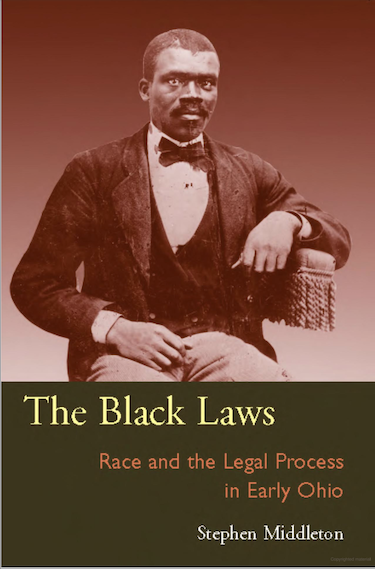The six right-wing U.S. Supreme Court justices have just abolished affirmative action in colleges and universities. A primary reason for such a ruling, they argue, is that neither the existence nor the effect of systemic racism exists in the country. Justice Ketanji Brown Jackson wrote a strong dissent to this view by providing a short history lesson.
Justice Jackson opened her dissent with the following paragraph:
Every moment these gaps [by race] persist is a moment in which this great country falls short of actualizing one of its foundational principles — the “self-evident” truth that all of us are created equal. Yet, today, the Court determines that holistic admissions programs like the one that the University of North Carolina (UNC) has operated, consistent with Grutter v. Bollinger, 539 U. S. 306 (2003), are a problem with respect to achievement of that aspiration, rather than a viable solution (as has long been evident to historians, sociologists, and policymakers alike) . . .
Justice Jackson continues with her history lesson. I highly recommend you read it. This is some of the history that is not discussed enough. I provide here a few excerpts from her powerful dissent.
Jim Crow, as much as anything else, was a comprehensive scheme of economic exploitation. It replaced "the Black Codes, which themselves had replaced slavery's form of comprehensive economic exploitation." — Justice Kentanji Brown Jackson
This contention [that affirmative action is unfair] blinks both history and reality in ways too numerous to count. But the response is simple: Our country has never been colorblind. Given the lengthy history of state-sponsored race-based preferences in America, to say that anyone is now victimized if a college considers whether that legacy of discrimination has unequally advantaged its applicants fails to acknowledge the well-documented “intergenerational transmission of inequality” that still plagues our citizenry. . .
It is that inequality that admissions programs such as UNC’s help to address to the benefit of us all. Because the majority’s judgment stunts that progress without any basis in law, history, logic, or justice, I dissent. . .
[Then came Jim Crow]—a system that was, as much as anything else, a comprehensive scheme of economic exploitation to replace the Black Codes, which themselves had replaced slavery’s form of comprehensive economic exploitation. . .
[The] government was “giving away land” on the western frontier, and with it “the opportunity for upward mobility and a more secure future,” over the 1862 Homestead Act’s three-quarter-century tenure. Black people were exceedingly unlikely to be allowed to share in those benefits, which by one calculation may have advantaged approximately 46 million Americans living today. . .
With Black people still locked out of the Homestead Act giveaway, it is no surprise that, when the Great Depression arrived, race-based wealth, health, and opportunity gaps were the norm. . .
Federal and State Governments’ selective intervention further exacerbated the disparities. Consider for example the federal Home Owners’ Loan Corporation (HOLC), created in 1933 [It created redlining] . . .
Similarly, consider the Federal Housing Administration (FHA), created in 1934, which insured highly desirable bank mortgages. Eligibility for this insurance required an FHA appraisal of the property to ensure a low default risk. But, nationwide, it was FHA’s established policy to provide “no guarantees for mortgages to African Americans, or to whites who might lease to African Americans,” irrespective of creditworthiness. . .
For present purposes, it is significant that, in so excluding Black people, government policies affirmatively operated — one could say, affirmatively acted — to dole out preferences to those who, if nothing else, were not Black. Those past preferences carried forward and are reinforced today by (among other things) the benefits that flow to homeowners and to the holders of other forms of capital that are hard to obtain unless one already has assets. . .
This discussion of how the existing gaps were formed is merely illustrative, not exhaustive. I will pass over Congress’s repeated crafting of family-, worker-, and retiree protective legislation to channel benefits to White people, thereby excluding Black Americans from what was otherwise “a revolution in the status of most working Americans.” I will also skip how the G. I. Bill’s “creation of. . . middle-class America” (by giving $95 billion to veterans and their families between 1944 and 1971) was “deliberately designed to accommodate Jim Crow.”
We need more of this American history spread all over America.
• • •• • •
Wornie Reed is Professor Emeritus of Sociology and Africana Studies and Director of the Race and Social Policy Research Center at Virginia Tech University. Previously he developed and directed the Urban Child Research Center in the Maxine Goodman Levin College of Urban Affairs at Cleveland State University (1991-2001), where he was also Professor of Sociology and Urban Studies (1991-2004). He was Adjunct Professor at the Case Western Reserve University School of Medicine (2003-4). Professor Reed served a three-year term (1990-92) as President of the National Congress of Black Faculty, and he is past president of the National Association of Black Sociologists (2000-01).
This column first appeared online at What the Data Say and is shared here by permission.













